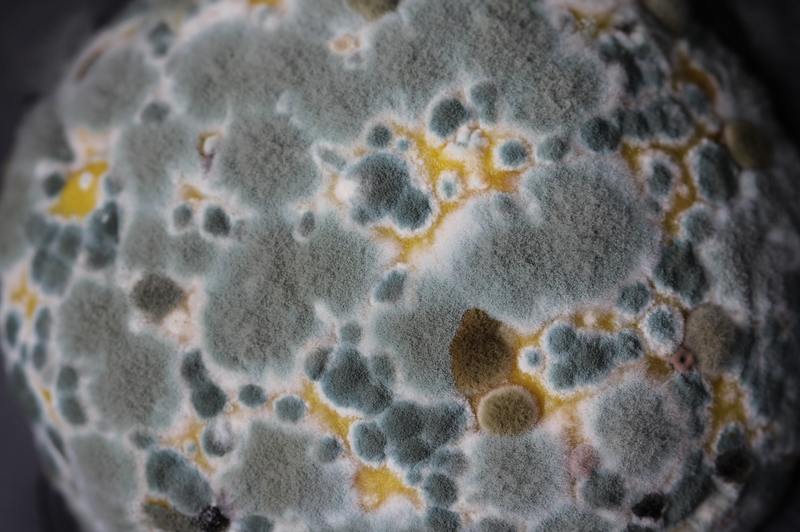If you ever ask another homeowner “what is the most dangerous mold”, they will definitely reply “black mold” with fear. This mold is a significant headache to anyone because it proliferates and it causes several health issues.
You must learn everything essential about black mold. Here’s a guide to help you protect your home and your loved ones from the deadly fungus.

Why Is Black Mold Dangerous?
This mold can grow anywhere that’s exposed to moisture. It could be locked away in your basement or in frequented areas like your bathroom and kitchen.
You’ll know the mold is there because of the musty odor it emits.
Stachybotrys can cause several health issues if not removed right away. It can cause respiratory problems, flu-like symptoms, memory loss, and diarrhea.
Children, the elderly, and pets are at high risk of getting black mold poisoning. That’s why you must treat it once you see a dark spot on your walls.
Here’s a guide on how to identify black mold at home.
Other Molds To Look Out For
Stachybotrys is the most dangerous mold, but there are also other fungi you should look out for at home.
1. Alternaria
This mold usually appears in the spring and summer. The spores float in the air, and it grows on textiles.
Alternaria can cause severe allergies if left unattended.
2. Aspergillus
You can generally find this mold in the air, but it can be dangerous for people with weak immune systems. This mold can cause lung infections and allergic reactions.
3. Penicillium
This is another everyday mold, but if it’s trapped inside a room, it can cause respiratory problems like asthma.
4. Chaetomium
This mold shares many similar qualities with black mold. You usually find it in areas with water damage.
Chaetomium can trigger some autoimmune diseases and neurological damage.
5. Fusarium
This mold usually grows on soil and plant debris. It can also grow inside your drywall or foam installation and under your carpets.
Sometimes you can develop an eye infection when exposed to this mold.
What Can Kill Black Mold?
Once you spot black mold, you need to remove it. Luckily, some standard household products are the perfect mold cleaning agents.
White vinegar
Use the vinegar undiluted on your mold spots. It has antibacterial qualities that will kill black mold from the roots.
Baking soda
You can use baking soda to clean several things, and one of those is black mold.
It can absorb the musty odors and prevent the spores from growing again. It’s also children-safe and pet-friendly.
You need to mix the powder and water together to create a paste for cleaning.
Hydrogen peroxide
This cleaning agent has antibacterial, antiviral, and antifungal properties. You can use it to clean porous surfaces like wood.
Here’s a guide on how to identify black mold on wood.
Hydrogen peroxide is safe to use, and it’s environment-friendly. Mix 2 parts of water with 3% hydrogen peroxide, and put it in a spray bottle for easy use.
Lemon juice
Lemons are the quickest remedy to black mold. You’re sure to have some stored in the fridge.
Sadly, it’s more of a temporary remedy until you can find a more potent chemical. Lemons will remove the musty smell, but it’s not strong enough to kill the roots.
Use three to five lemons on the spot, and let the juice sit for five minutes before you wipe it off.
Tea tree oil
This liquid is a natural fungicide that can also prevent mold spores from retaking roots.
Mix 1 cup water with 1 teaspoon of tea tree oil. Put it in a spray bottle, and now you have your mold killer!
Grapefruit seed extract
You may typically use this for healthcare, but did you know grapefruit seed extract can also be used as a cleaning solution? This extract has antibacterial polyphenols that can disinfect damp spaces and kill bacteria that could lead to mold!
Mix 1 cup of water with 10 drops of grapefruit seed extract, and put it in a spray bottle. Leave the liquid on the spot for at least 10 minutes before you wipe it off.
How To Prevent Black Mold
Once you’ve cleaned off the black mold, you need to ensure it doesn’t come back. You can prevent mold from growing again with these tips.
1. Dry all wet areas
Is there a leak at home, or did you spill any water? You need to dry these areas right away, so the surfaces don’t absorb the moisture.
2. Have proper ventilation
Make sure your room is adequately ventilated when you cook, bathe, or do laundry. Any activity that involves moisture could invite mold to grow.
3. Monitor the humidity
Keep your humidity level between 30 to 60 percent. You can purchase a moisture meter to help you keep track of the percentage or watch out for excessive condensation.
Too much humidity will cause excessive moisture inside, the perfect environment for mold.
4. Use mold-resistant products
You can use mold-resistant drywall or paint, and you can also apply products that prevent mold growth. This will keep your home safe from future infestations.
Conclusion
Mold can cause several problems at home. It can make your rooms look ugly and smell bad, and you may develop health problems.
You can do the necessary remedies when you can identify what is the most dangerous mold.
Always look out for black mold at home! Keep your rooms well ventilated and avoid moisture buildup.
